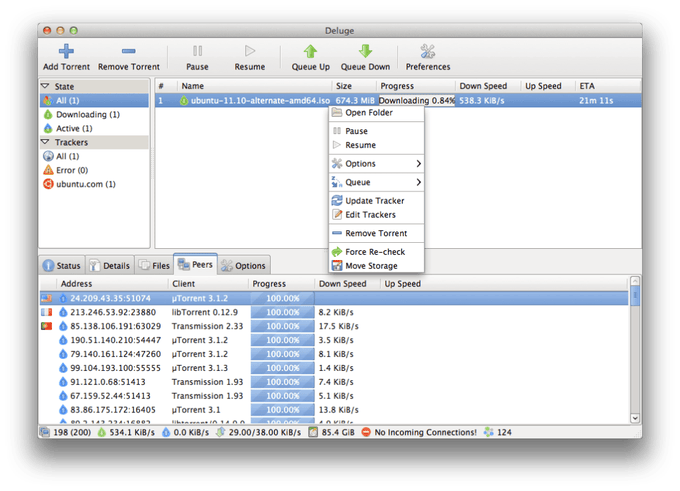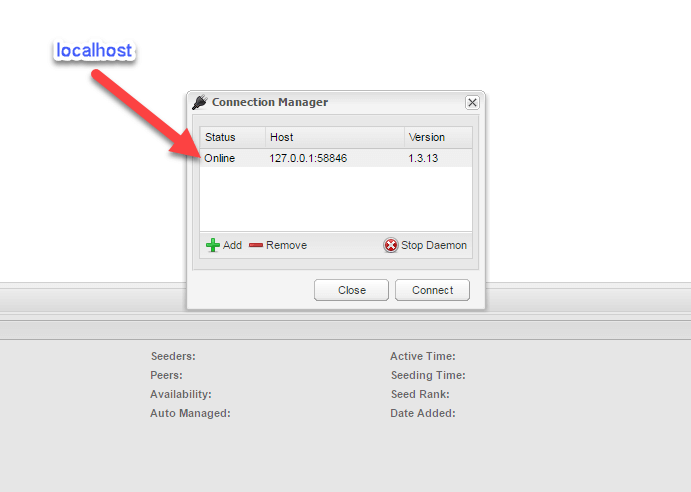
Anyway here is the output from the terminal:Ĭhain INPUT (policy ACCEPT 11M packets, 15G bytes) Unfortunally I didn't see nothing related to my issue. This forum of course has an abundant of information. But, of course I wanted some advice where to start at. No it's not difficult and I should take the time to read about this. Next, type the following (as root) at a terminal prompt, and paste the output so we can see what's going on: To start with, let us know what ports you have configured within Deluge, and for what purpose(s). It shouldn't be too terribly difficult to configure, however. it appears you're still having some issues with your firewall (and, I will say again, that you're better off not using the program that makes you want to disable the firewall than not using the firewall). What I like about them is that they serve well as a textbook while learning the material, and serve equally well as reference material once you've got the basics mastered.Īnyway. They are, as a rule, written in a very conversational manner easy to understand, and at the same time, very comprehensive in scope. Instead, I'll mention that, like all things to do with linux, you can't go wrong buying an O'Reilly book on whatever subject you wish to learn. well, the trite answer would be to have you type man iptables at a convenient terminal prompt - and, while that will tell you everything you'll ever need or want to know about iptables, it's rather dry reading and somewhat sparse in real-world examples. Last edited by livelong 5th August 2011 at 02:07 AM.Ī "noob" guide on iptables? hmm. I must be doing something wrong I keep getting no incoming connections. Post added at 08:59 PM - Previous post was at 08:54 PM. I would like to know how would I close that port as well. Post added at 08:54 PM - Previous post was at 08:49 PM.

Thanks for the response! Do you know where I can find a "noob" guide on iptables/configs.

Iptables -A INPUT -protocol TCP -dport 10000 -j ACCEPT the way *I* would specify the rule in iptables, if I needed to open port 10000 to allow TCP connections, would be: you may want to check to see if Deluge uses TCP, UDP, or both.Īlso, since it appears you're using iptables - you'll probably want to go a step further (once you have a correct set of rules in iptables) and save your current ruleset to /etc/sysconfig/iptables (as root, of course), so that your default ruleset will include that rule the next time you restart iptables (or restart your machine, which will involve restarting iptables.)Īnyway. some bittorrent clients use both protocols. Also, note that you're only allowing TCP traffic on that port, not UDP traffic. I *think* you probably want to allow "destination port" 10000 (if the port is, actually, 10000), not source-port - meaning that "traffic destined for port 10000 will be accepted". # iptables -append INPUT -protocol TCP -source-port 10000 -jump ACCEPT.

It cannot be anything else except a connection established through VPN.Thank you I got my ports open using this: It cannot be anything else except the forwarded port of client1.ģ) Client1 shows the address of client2 as 10.0.0.1:xxxxx (xxxxx - random port number).
#Deluge client no incoming connections torrent#
What happens next:ġ) Client2 begins downloading from client1 (and possibly from some others, but that's irrelevant).Īs far as I know, two torrent clients cannot connect if both have inaccessible incoming ports.Ģ) Client2 shows the address of client1 as 1.2.3.4:50000. After it's complete, I begin downloading the same torrent by client2.
#Deluge client no incoming connections download#
On client1 I download a torrent with a very small number of seeders. I have "client2", which is behind NAT and doesn't have incoming port forwarded. I have "client1", which is Deluge 2.0.3, that have incoming port 50000, which is forwarded from a VPN server with external (Internet) address, say, 1.2.3.4 and internal (VPN) address 10.0.0.1. OK, let us see in detail why I decided that I actually have incoming connections. I was just little "worried" that you actually didn't have incoming connections


 0 kommentar(er)
0 kommentar(er)
